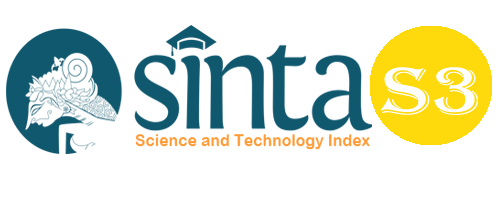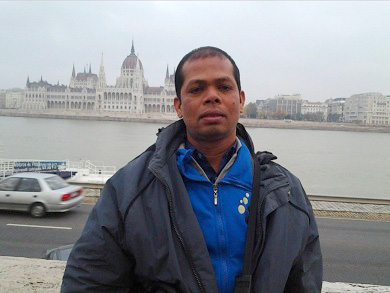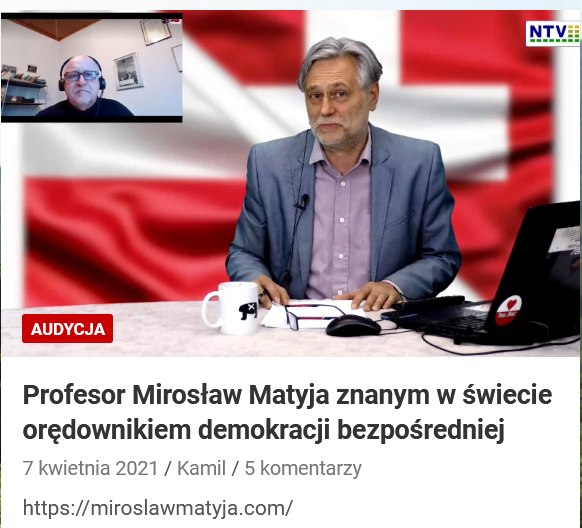Analysis of the Tradition of Reciprocating Pantun in the Marriage Party of the Malay Society in Ujung Kubu Village, Nibung Hangus District, Batu Bara Regency
Abstract
The purpose of the study was to describe the tradition of reciprocating rhymes in the wedding party of the Malay community in Ujung Kubu Village. This research uses descriptive qualitative method. Descriptive data is data in the form of words, pictures, and not numbers (Moleong, 2016:11). This researcher took place in Ujung Kubu Village, Nibung Hangus District, Batu Bara Regency. The distance from Asahan University (UNA) to Batubara is approximately 67 km. The results of the study indicate that pantun in Malay people's lives is a means to convey moral messages which are full of noble values of religion, culture and social norms of society. The event of replying to the doorstop opening poem ended with a closing greeting from each of the bride and groom, not to forget the two families apologized to each other for possible mistakes and mistakes during the event, the event ended with a closing greeting. Malay people really like rhyming, from the past until now pantun has always been a tradition of the Malay community, it can even be said that the Malay community used to speak with rhymes. Pantun, especially in Malay society, is used as a means of communication to convey intentions, thoughts, opinions or advice and teaching. Pantun has pressure, acceptance and rhythm because rhymes contain aesthetic value, so at this time the tradition of reciprocating rhymes is still ongoing in the Malay community in Ujung Kubu Village, Nibung Hangus District, Batubara Regency in wedding parties.
.
Keywords
Full Text:
PDFReferences
Ariyono and Aminuddin. Anthropology Dictionary. (1985). Jakarta: Academic Pressindo. Bungin, Burhan. 2010. Qualitative Research (Communications, Economics, Public Policy, and Other Social Sciences). Jakarta: Predana Media Group.
Bernard, Russell, H. (1994). “The Literature Research” in Research Methods in Anthropology. (1994). London and New Delhi: Sage Publications.
Damanik, Ramlan. (2002). Functions and Roles of the Deli Malay Traditional Marriage Ceremony. Medan: USU Library.
Jamallia, Lita. (2014). The Tradition of Opening the Doors at Betawi Weddings.
Mahsun, (2005). Language Research Methods. Jakarta: Raja Grafindo Persada.
Moleong, Lexy J. (2017). Qualitative Research Methodology. Bandung: Rosdakarya Youth.
Nadila. (2012). Sociological Values of Literature Singing Swings Children in the Coal Malay Society. Undergraduate Thesis. Medan. FIB. USU.
Natia, IK. (2008). Overview of Theory and Periodization of Indonesian Literature. Surabaya: Star. Pradopo, Rachmat Djoko. 1999. Poetry Study. Gadjah Mada University.
Purba, N. (2020). The Use of Simalungun Language by Anak Boru Sanina in the Simalungun Wedding Ceremony (Sociolinguistic Studies). Lakhomi Journal: Scientific Journal of Culture. 1-7
Ratna, Yoman Khuta: (2004). Theory, Methods, and Techniques of Literary Research. Yogyakarta: Student Library.
Rizal, Yose. (2010). Appreciation of Indonesian Poetry and Literature. Jakarta: Mulia Graphics.
Tantawi, Yahya. (2015). Academic Indonesian. Bandung: Cipta Pustaka Media.
DOI: https://doi.org/10.33258/birci.v5i3.6725
Article Metrics
Abstract view : 54 timesPDF - 10 times
Refbacks
- There are currently no refbacks.

This work is licensed under a Creative Commons Attribution-ShareAlike 4.0 International License.

This work is licensed under a Creative Commons Attribution-ShareAlike 4.0 International License.

_.gif)

















_.gif)



